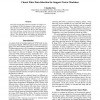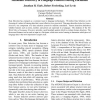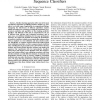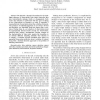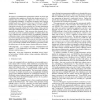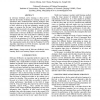CEC
2011
IEEE
13 years 6 months ago
2011
IEEE
— The principle of artificial curiosity directs active exploration towards the most informative or most interesting data. We show its usefulness for global black box optimizatio...
VMV
2004
14 years 8 months ago
2004
The paper presents a new vector quantization based approach for selecting well-suited data for hand-eye calibration from a given sequence of hand and eye movements. Data selection...
AAAI
2006
14 years 8 months ago
2006
This paper presents data selection procedures for support vector machines (SVM). The purpose of data selection is to reduce the dataset by eliminating as many non support vectors ...
LREC
2008
14 years 8 months ago
2008
Data Selection has emerged as a common issue in language technologies. We define Data Selection as the choosing of a subset of training data that is most effective for a given tas...
IJCNN
2000
IEEE
14 years 10 months ago
2000
IEEE
A training data selection method for multi-class data is proposed. This method can be used for multilayer neural networks (MLNN). The MLNN can be applied to pattern classification...
BIBE
2007
IEEE
14 years 10 months ago
2007
IEEE
Machine learning approaches offer some of the most cost-effective approaches to building predictive models (e.g., classifiers) in a broad range of applications in computational bio...
AINA
2010
IEEE
14 years 12 months ago
2010
IEEE
Abstract—We describe a Bayesian formalism for the intelligent selection of observations from sensor networks that may intermittently undergo faults or changepoints. Such active d...
VISUALIZATION
2005
IEEE
15 years 11 days ago
2005
IEEE
We propose a distributed data management scheme for large data visualization that emphasizes efficient data sharing and access. To minimize data access time and support users wit...
ICIP
2007
IEEE
15 years 1 months ago
2007
IEEE
In relevance feedback, active learning is often used to alleviate the burden of labeling by selecting only the most informative data. Traditional data selection strategies often c...

